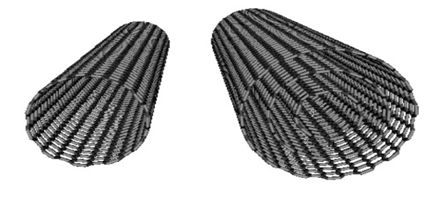Carbon nanotubes (CNTs) for infrared laser systems

Nanotrubicky
By IvanaSmoradová (Own work) [CC BY-SA 3.0 (http://creativecommons.org/licenses/by-sa/3.0)], via Wikimedia Commons
Ultrashort pulses of light produced by fibre lasers have enabled major advances in fields from biomedicine to micromachining. Exploiting carbon nanomaterials for their production could provide important benefits relative to conventional semiconductor-based systems.
Carbon nanomaterials such as carbon nanotubes (CNTs) have unique optical
properties that can be optimised over a very broad spectral range
dependent on the size and shape of the material. They are very promising
for use in non-linear optical (NLO) devices for fibre lasers to enable
generation of ultrashort pulses in the infrared (IR) optical range. The
IR range provides a window on to molecular composition useful in
environmental or biomedical sensing applications and it is also
important in telecommunications.
EU-funded scientists launched the project TELASENS (Carbon nanotubes technologies in pulsed fibre lasers for telecom and sensing applications) to exploit carbon nanomaterials in the NLO devices of pulsed fibre lasers. A particular focus is their use in saturable absorbers, NLO devices that facilitate generation of ultrashort pulses circulating in the laser resonator.
The team is making impressive progress. A combination of computer modelling and experimental physical chemistry has led to development of novel saturable absorber devices by deposition of CNTs in the fibre micro-channel and on the optical mirrors. Further, these have been integrated in fibre lasers with various active media to achieve ultrashort pulse generation in the broad (IR) spectral range between 1 000 and 2 000 nm.
Researchers are rapidly proceeding toward their end objective: development of cost-effective fibre laser sources. Eventual applications include personalised health care, novel sensors for manufacturing and transport, and new fibre optics communication systems. Along the way, TELASENS is training a new generation of scientists in NLO devices and fibre laser technologies as a legacy far outlasting the project's duration.
published: 2015-12-30

